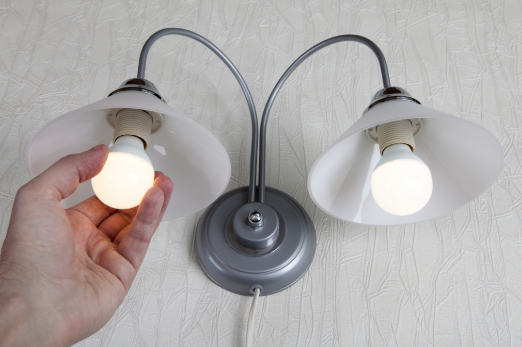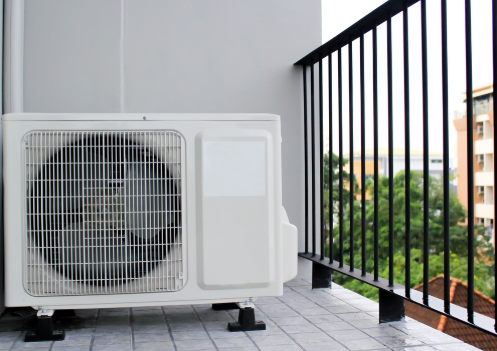Energy efficiency measures can be an excellent home upgrade, achieving a permanent reduction of your utility bills. The most effective measures are those that improve heating and cooling systems, which account for the largest share of home energy consumption. Since lighting can also add up significant expenses throughout the year, upgrading to LED is a cost-effective measure as well.
To complement efficient HVAC installations, homeowners should make sure their properties are well insulated and airtight. Ideally, the building envelope should keep heat outside during summer and inside during winter. Insulation also helps conserve a suitable temperature if a building is left without heating and cooling due to a blackout.
Also Read: Soleta : Sustainable Zero Energy House
Is Your Home Well Insulated and Airtight?

Even if you purchase the most efficient air conditioner and furnace in the market, a home with air leaks and deficient insulation wastes a lot of energy. When this issue is present, the home gains more heat during summer and loses more heat during winter. HVAC systems must work harder to compensate, increasing energy bills regardless of equipment efficiency.
Areas with poor insulation and air leaks are invisible, but they can be detected with a professional energy audit. Consulting engineers can find weak spots in your building envelope with thermal imaging cameras and pressurization tests, so you can then improve insulation and seal any air leaks found.
When dealing with air leaks, the US Department of Energy recommends caulking for fixed components and weatherstripping for moving components.
The type and location of your windows also influence heat gain and heat loss. While windows provide free daylight, they can also cause glare and unwanted heating. If you live in the northern hemisphere, north-facing windows are the best option for natural lighting because they don’t get direct sunlight.
For windows facing in other directions, the heating and glare effects can be reduced with shading and vegetation. Triple-pane windows with low-emissivity glass offer the best performance, minimizing heat movement in both directions.
Upgrading to LED Lighting

An LED bulb may seem expensive upfront, but it lasts over 20 times longer than an incandescent bulb and 2 to 3 times longer than a compact fluorescent light. LED lighting also achieves energy savings above 80% when replacing incandescent lighting, and savings in the range of 25% to 50% when replacing fluorescent lighting.
To achieve the best results with LED lighting, look for products with an ENERGY STAR label. The program is managed by the US Environmental Protection Agency, and the label indicates that product performance has been validated with stringent laboratory tests.
Depending on where you live, the local government or power company may offer cash rebates for LED lighting products. Typically, only products with ENERGY STAR or other similar labels are eligible for incentives. For more energy saving tips, check out this guide.
Depending on where you live, the local government or power company may offer cash rebates for LED lighting products. Typically, only products with ENERGY STAR or other similar labels are eligible for incentives. Many homeowners find that combining rebates with simple energy saving tips makes a noticeable difference in their electricity bills.
Improving Heating and Cooling Efficiency

Heating and cooling systems typically have the highest energy consumption among household appliances. Ideally, you should purchase the most efficient HVAC equipment that meets your budget. Getting familiarized with the energy efficiency ratings is useful; these ratings are similar to the gas mileage value of a car, where a larger number translates into reduced operating costs.
- The Seasonal Energy Efficiency Ratio (SEER) is used for mini-split air conditioners and heat pumps in cooling mode, and it provides a ratio of cooling output and power input. You can expect decent savings with a SEER of at least 20, and the most efficient units exceed SEER 30.
- The Annual Fuel Utilization Efficiency (AFUE) is used for boilers and furnaces, which rely on fossil fuel combustion. The most efficient units have an AFUE above 98%.
- The Heating Seasonal Performance Factor (HSPF) is similar to the SEER, but applicable to air-source heat pumps when they operate in heating mode. The best heat pumps have an HSPF above 10.
- The Energy Factor (EF) describes the performance of domestic hot water systems. Old and inefficient heaters can have an EF below 0.60, while modern heat pumps designed for water heating offer an EF above 2.
Selecting efficient equipment is very important, but you must also make sure your HVAC systems have adequate capacity according to the needs of your home. Undersized units are unable to achieve adequate temperatures during the hottest and coldest days of the year, while oversized installations are more expensive.
Oversized equipment also tends to run in shorter cycles due to its excess capacity, and this is detrimental for its service life.
Solar Rebates and Incentives
Home solar rebates are a great way to encourage homeowners to invest in solar power and other renewable energy sources. Solar rebates can come in the form of tax credits, cash back offers, or discounts on the purchase of solar equipment.
Many solar rebate programs are run by state and local governments, utility companies, or solar manufacturers. Home solar rebates typically range from 10% to 30% of the cost of a solar system, making them a significant incentive for homeowners considering solar power.
In addition to solar rebates, there are also many other programs that offer incentives for energy efficiency upgrades. These programs can help offset the cost of energy-efficient appliances, insulation, and home weatherization.
As a result, they provide an important incentive for homeowners to invest in energy efficiency. By offering solar rebates and other incentives, we can encourage more homeowners to make the switch to renewable energy sources.
About the Author:

Michael Tobias is the founder and principal of New York Engineers, an Inc 5000 Fastest Growing Company in America. He leads a team of 30+ mechanical, electrical, plumbing, and fire protection engineers from the company headquarters in New York City; and has led over 1,000 projects in New York, New Jersey, Pennsylvania, Connecticut, Florida, Maryland, and California, as well as Singapore and Malaysia.